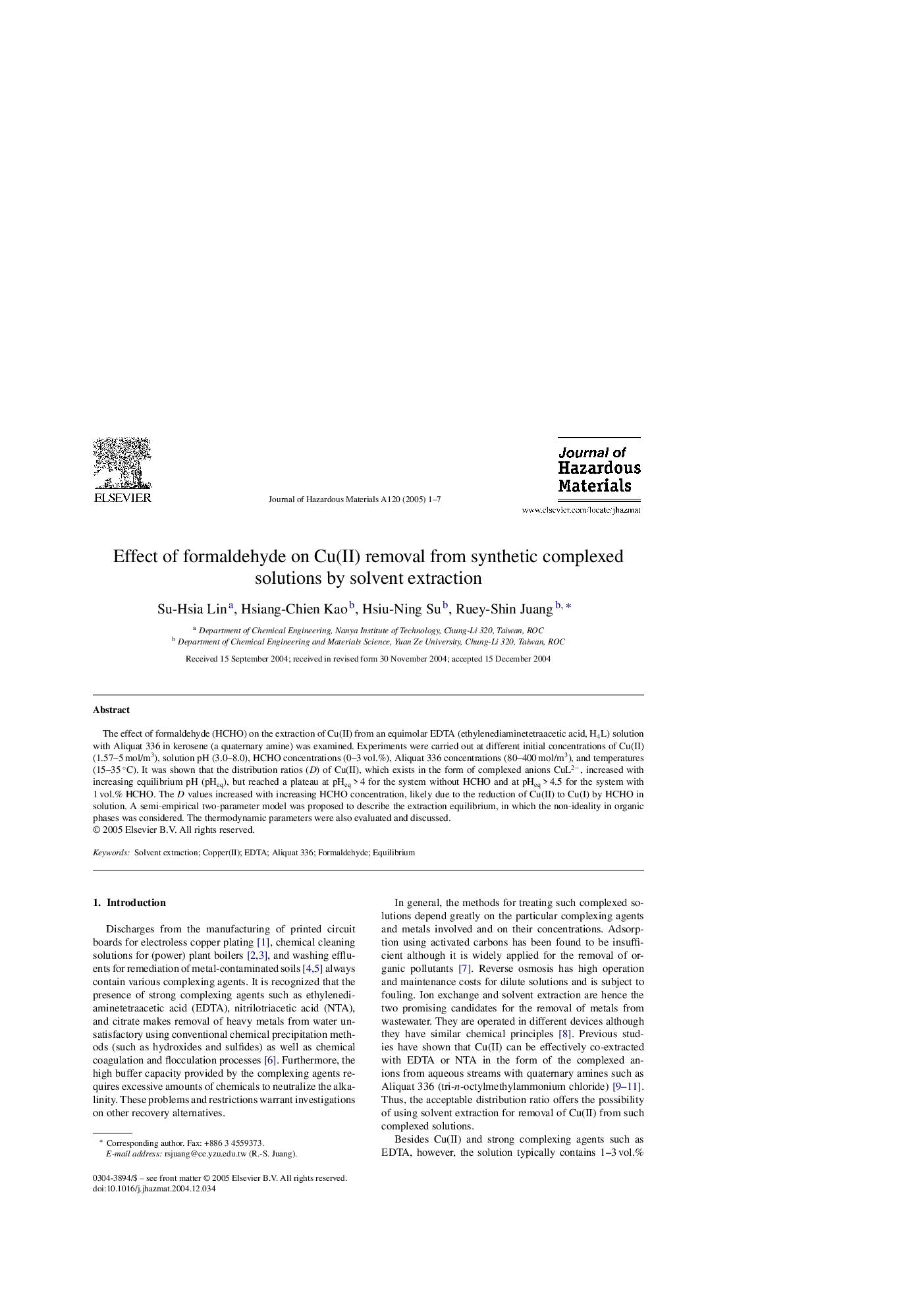| Article ID | Journal | Published Year | Pages | File Type |
|---|---|---|---|---|
| 9674294 | Journal of Hazardous Materials | 2005 | 7 Pages |
Abstract
The effect of formaldehyde (HCHO) on the extraction of Cu(II) from an equimolar EDTA (ethylenediaminetetraacetic acid, H4L) solution with Aliquat 336 in kerosene (a quaternary amine) was examined. Experiments were carried out at different initial concentrations of Cu(II) (1.57-5 mol/m3), solution pH (3.0-8.0), HCHO concentrations (0-3 vol.%), Aliquat 336 concentrations (80-400 mol/m3), and temperatures (15-35 °C). It was shown that the distribution ratios (D) of Cu(II), which exists in the form of complexed anions CuL2â, increased with increasing equilibrium pH (pHeq), but reached a plateau at pHeq > 4 for the system without HCHO and at pHeq > 4.5 for the system with 1 vol.% HCHO. The D values increased with increasing HCHO concentration, likely due to the reduction of Cu(II) to Cu(I) by HCHO in solution. A semi-empirical two-parameter model was proposed to describe the extraction equilibrium, in which the non-ideality in organic phases was considered. The thermodynamic parameters were also evaluated and discussed.
Related Topics
Physical Sciences and Engineering
Chemical Engineering
Chemical Health and Safety
Authors
Su-Hsia Lin, Hsiang-Chien Kao, Hsiu-Ning Su, Ruey-Shin Juang,
